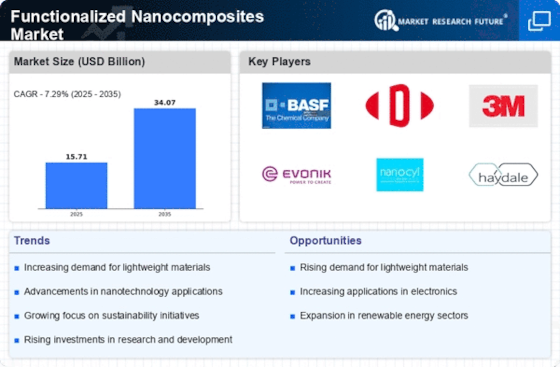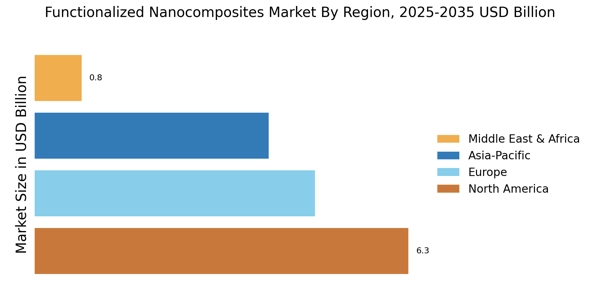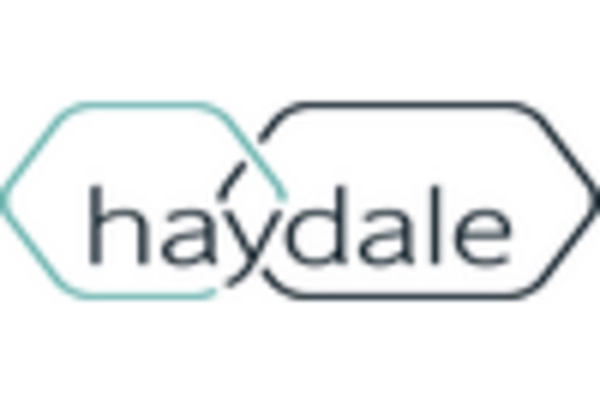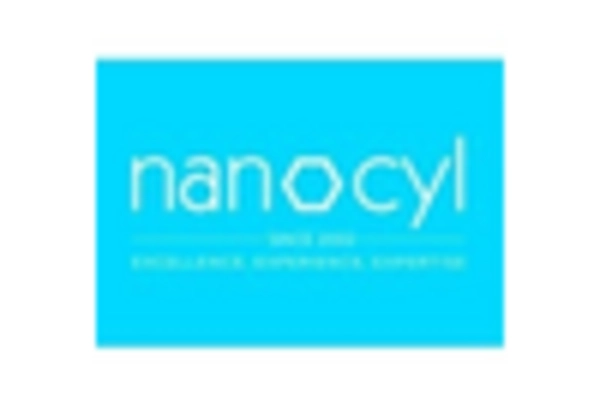Advancements in Electronics
The electronics industry is experiencing a notable shift towards the incorporation of functionalized nanocomposites, driven by the need for enhanced performance and miniaturization of devices. These materials offer superior electrical conductivity and thermal stability, making them ideal for applications in semiconductors and flexible electronics. The functionalized nanocomposites market is expected to expand as manufacturers seek innovative solutions to meet the growing demand for lightweight and efficient electronic components. By 2025, the market for these materials in electronics is anticipated to grow by over 20%, reflecting the industry's commitment to integrating advanced materials that facilitate the development of next-generation devices. This trend underscores the critical role of functionalized nanocomposites in shaping the future of electronic technology.
Growing Environmental Regulations
The functionalized nanocomposites market is significantly influenced by the increasing stringency of environmental regulations. Governments worldwide are implementing policies aimed at reducing carbon footprints and promoting sustainable materials. As a result, industries are compelled to adopt functionalized nanocomposites, which often provide eco-friendly alternatives to traditional materials. By 2025, it is anticipated that the market for these composites will grow by 18%, driven by regulatory pressures and consumer demand for sustainable products. This shift not only enhances the market's appeal but also encourages manufacturers to innovate in order to comply with environmental standards. The alignment of functionalized nanocomposites with sustainability goals positions them as a favorable choice in various sectors.
Rising Demand in Automotive Sector
The automotive sector exhibits a burgeoning demand for functionalized nanocomposites, primarily due to their lightweight and high-strength properties. These materials enhance fuel efficiency and reduce emissions, aligning with the industry's shift towards sustainability. In 2025, the functionalized nanocomposites market is projected to witness a growth rate of approximately 15% as automotive manufacturers increasingly adopt these advanced materials. The integration of nanocomposites in vehicle components, such as body panels and interior parts, not only improves performance but also contributes to overall vehicle safety. This trend indicates a significant transformation in automotive manufacturing processes, where functionalized nanocomposites play a pivotal role in meeting stringent environmental regulations and consumer expectations.
Expanding Applications in Healthcare
The healthcare sector is increasingly recognizing the potential of functionalized nanocomposites, leading to a surge in their applications in medical devices and drug delivery systems. These materials offer unique properties such as biocompatibility and enhanced drug release profiles, which are crucial for improving patient outcomes. The functionalized nanocomposites market is projected to grow by approximately 14% by 2025, as healthcare providers and manufacturers seek innovative solutions to address complex medical challenges. The integration of nanocomposites in healthcare not only enhances the efficacy of treatments but also paves the way for the development of advanced diagnostic tools. This trend indicates a promising future for functionalized nanocomposites in revolutionizing healthcare solutions.
Increased Investment in Research and Development
Investment in research and development (R&D) within the functionalized nanocomposites market is on the rise, as companies strive to innovate and enhance product offerings. This trend is fueled by the need for advanced materials that can meet specific performance criteria across various applications, including construction, healthcare, and packaging. In 2025, R&D expenditures in this sector are projected to increase by approximately 12%, reflecting a growing recognition of the potential benefits of functionalized nanocomposites. Companies are focusing on developing new formulations and processing techniques that improve the properties of these materials, thereby expanding their applicability. This emphasis on innovation is likely to drive market growth and foster competitive advantages among key players.


















Leave a Comment